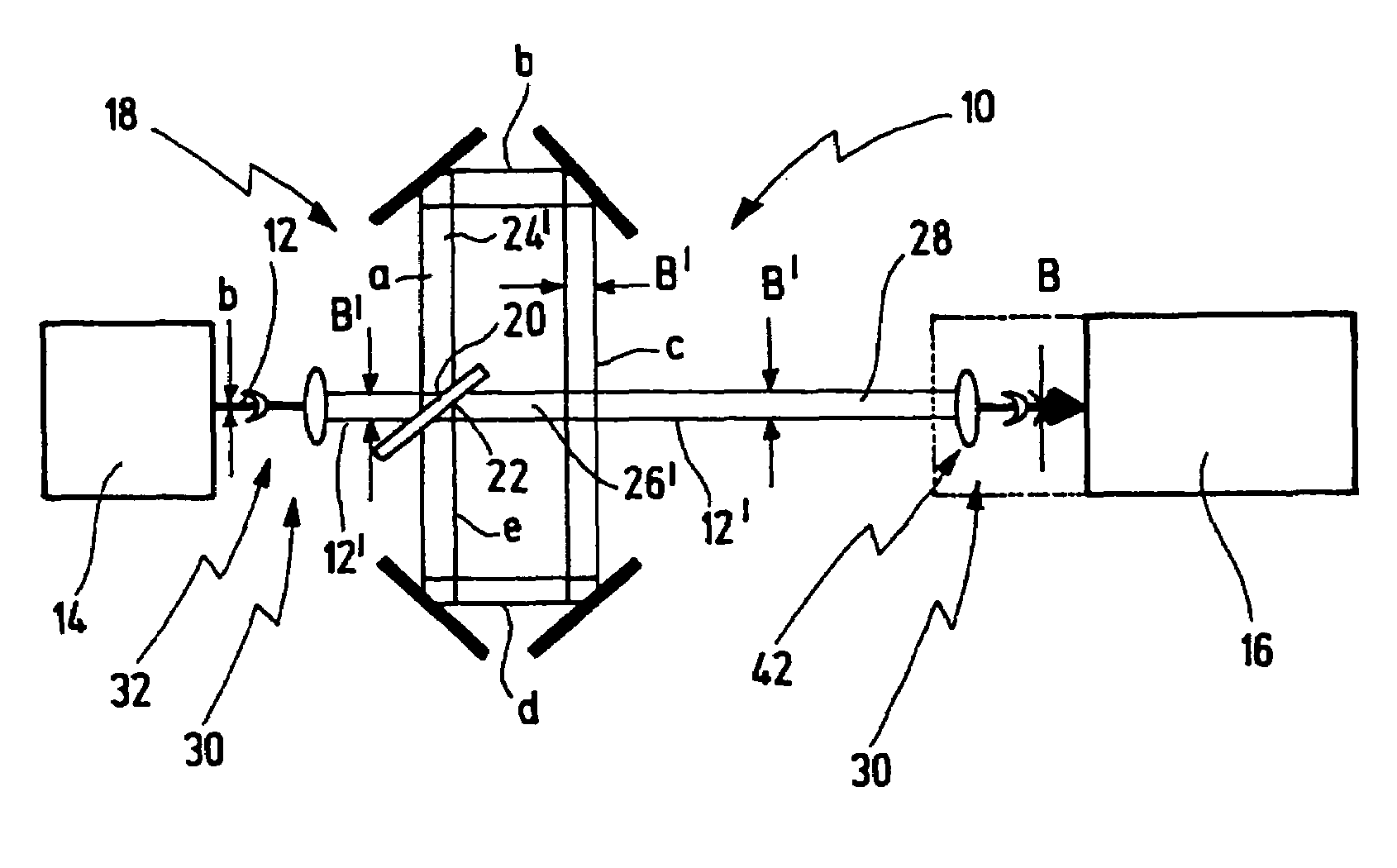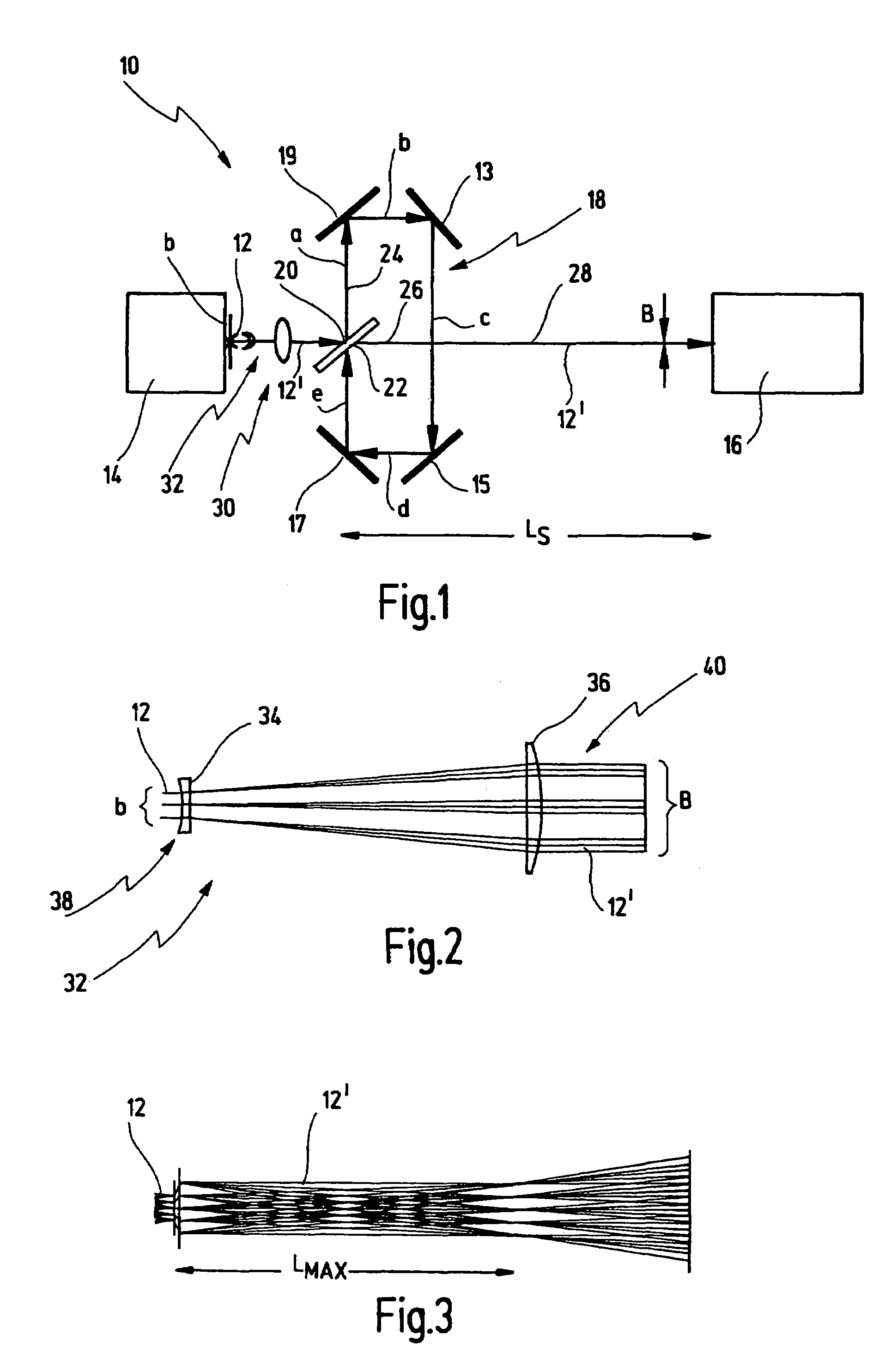Method and optical arrangement for beam guiding of a light beam with beam delay
a technology of beam delay and beam guiding, which is applied in the direction of optical radiation measurement, instruments, photomechanical equipment, etc., can solve the problems of shortening the service life, affecting the efficiency of optical elements, so as to achieve the effect of reducing the number of optical elements
- Summary
- Abstract
- Description
- Claims
- Application Information
AI Technical Summary
Benefits of technology
Problems solved by technology
Method used
Image
Examples
Embodiment Construction
[0061]Firstly, the principle of an optical arrangement for beam guiding of a light beam from a light source to a target location is described with reference to FIGS. 1 to 3. The basic relationships of the beam guiding are elucidated in this case.
[0062]FIG. 1 illustrates an optical arrangement—provided with the general reference symbol 10—for beam guiding of a light beam 12 generated by a light source 14. The optical arrangement 10 has the function of guiding the light beam 12 to a target location 16, and if appropriate shaping said light beam.
[0063]In the case of the preferred use of the optical arrangement 10, the light source 14 is a laser, for example an excimer laser, which generates pulsed laser light, with the result that the light beam 12 is constructed from individual light pulses. In this application, the target location 16 is a projection individual light pulses. In this application, the target location 16 is a projection exposure installation, by way of example, by means ...
PUM
| Property | Measurement | Unit |
|---|---|---|
| pulse energy | aaaaa | aaaaa |
| transmission path distance LMAX | aaaaa | aaaaa |
| path distances LS | aaaaa | aaaaa |
Abstract
Description
Claims
Application Information
 Login to View More
Login to View More - R&D
- Intellectual Property
- Life Sciences
- Materials
- Tech Scout
- Unparalleled Data Quality
- Higher Quality Content
- 60% Fewer Hallucinations
Browse by: Latest US Patents, China's latest patents, Technical Efficacy Thesaurus, Application Domain, Technology Topic, Popular Technical Reports.
© 2025 PatSnap. All rights reserved.Legal|Privacy policy|Modern Slavery Act Transparency Statement|Sitemap|About US| Contact US: help@patsnap.com



